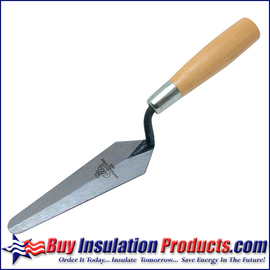DESCRIPTION:
VI-CRYL CP-10 weather barrier coating is a tough, durable, and fire-resistive water based mastic for most types of thermal insulation and finishing/insulating cements. It is very thixotropic - it looks heavy but spreads easily. This thermal mastic is outdoor rated and U.V. resistant.
USES:
Childers CP-10 weather barrier coating is unsurpassed for the mechanical protection and weatherproofing of thermal insulations both outdoors and indoors, in hot, cold, and dual-temperature service. However, since it is a ‘breathing’ water-based mastic (vapors under pressure will pass through it) it should only be used over insulations in low temperature, or dual-temperature service when the insulations themselves are vapor barriers (Fiberglass Pipe's ASJ paper is a vapor barrier). VI-CRYL CP-10 water-based mastic has also found use throughout the thermal insulation industry as a coating used over closed cell polyethylene and polyurethane foam insulations.
*Note from Buy Insulation Products - Childers CP-10 and CP-11 thermal mastics are great for sealing up insulation on chilled water systems. Use CP-11 water-based mastic to seal up all exposed fiberglass, paint any tape seams and SSL closures to prevent condensation buildup on the pipes.
* CP-11 can be painted on with a chip paint brush while CP-10 is applied with a trowel
CHILDERS CP-10 MASTIC DATASHEET
-
Does a nice job
I have used this item for various insulation work.
I normally used a putty knife and had good results -
Works well
After using the rewettable fiberglass cloth to encapsulate the asbestos insulation on my heat pipes, I applied this mastic for extra protection. As another viewer indicated, it is easiest to apply by hand after putting on latex gloves. I didn't bother with the brush since I was able to smooth it by hand, smoothing toward the area that had not yet been coated. It comes out quite smooth if you are careful.
-
Easy to apply. Does the job.
I have old steam pipes in the basement that are insulated with asbestos. I did not disturb the asbestos and covered it all with rewettable canvas pipe lagging. After the lagging cloth dried I used rubber gloves and applied the mastic by hand. With a little practice I was able to achieve a fairly smooth surface and then lightly brushed over it with a wide paint brush just to make the surface look a little more finished. It looks good. It is paintable, but it also looks fine in white without painting it.








